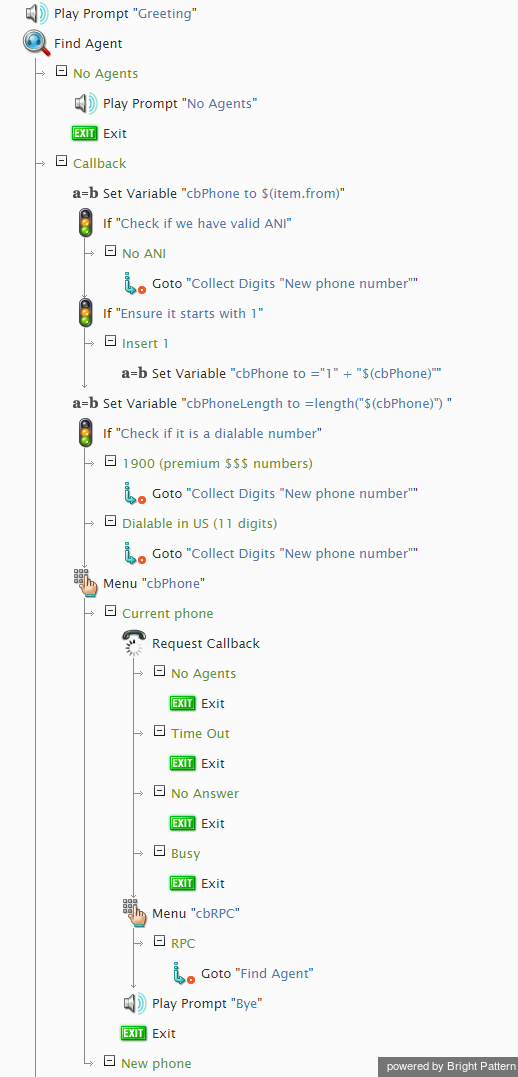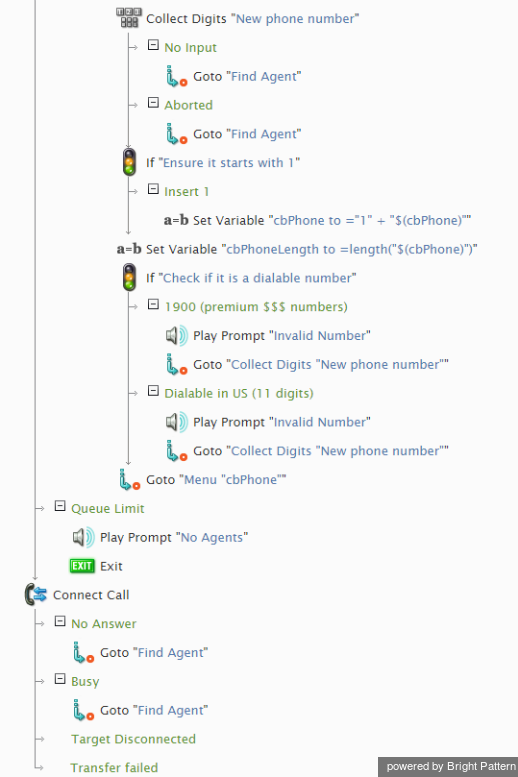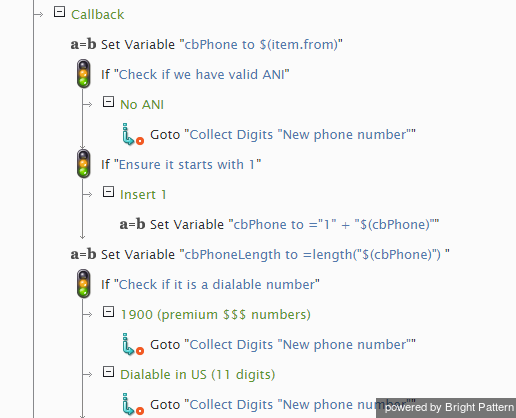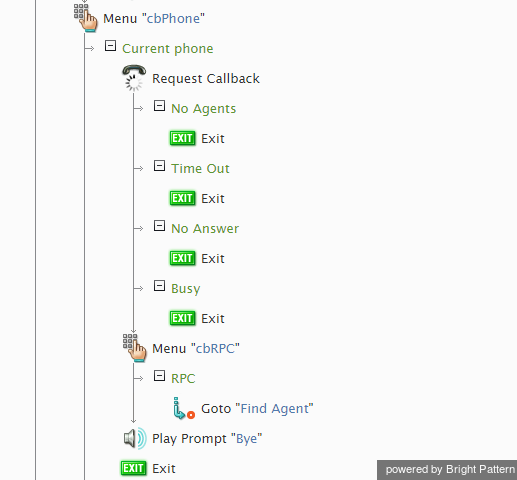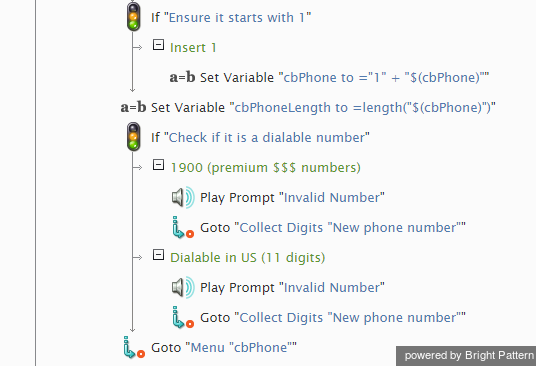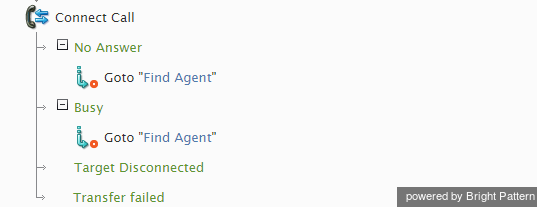シナリオ例
このセクションでは、バーチャルキュー(VQ)関連のロジックを備えた受信音声シナリオのフラグメントについて説明します。このシナリオ例は、 バーチャルキュー(コールバック)のシナリオテンプレートに基づきます。 このテンプレートをシナリオビルダーアプリケーションで開き、シナリオに含める各ブロックの設定を確認できます。
テンプレートからシナリオを作成する方法については、コンタクトセンター管理者ガイドのシナリオの概要をご覧ください。
シナリオの流れ
シナリオは、シナリオブロックによって開始されるアクションから構成されています。VQが有効になっているこのシナリオのブロックの流れについて上から下まで簡単に説明します。
プロンプトの再生ブロックは発信者に挨拶します。
プロンプトの再生ブロックはシナリオを開始します。発信者に対して 最初のアナウンス (ウェルカムメッセージや詳細情報のプロンプト)が流れます。
エージェントの検索ブロックは、発信者がキューで待機するか、コールバックオプションを受け入れるかを促します。
バーチャルキューオプションは、このチュートリアルの設定セクションで説明されているように、 エージェントの検索 ブロックで提供されます。
オンラインで待つことを選ぶ発信者は、接続される番が近くまでまでエージェントの検索ブロックで待機します。バーチャルキューオプションを受け入れる発信者は、コールバック 出口を介してこのブロックを出ます。
エージェントなしのブロックは、対応可能なエージェントが見つからない場合、発信者にシナリオを終了する方法を提供します。
コールの受付が可能なエージェントがいない場合、シナリオは エージェントなしの出口で終了します。
コールバックのプロパティは変数の設定およびIfブロックによって処理されます。
このシナリオではバーチャルキュー/コールバックが有効になっているため、エージェントがいない場合や発信者がキューで待機したくない場合は、発信者に対してコールバックを受信するオプションが提供されます。変数の設定 ブロックおよび Ifブロックによって、コールバックの処理方法が決定されます。
コールバック出口における最初の変数の設定ブロックで、コールバック用の番号は初期設定上 $(item.from)の値に設定されます。これは、元のコールの発信者IDです。
Ifブロックは、 発信者IDがあるかどうか、およびIDに対してダイヤルできるかどうかを決定します。
次に、シナリオは If ブロックを使って以下のことについて確認します:
- コールバック用に使う発信者ID (ANI) があること (ANIがない場合、電話番号の情報が収集されます。)
- 発信者IDがダイヤル可能で、1-900番号でないこと (length()関数は電話番号の桁数を確認するために使用されます。)
The Menu block asks the caller to establish the callback number.
The Menu block that follows will ask the caller to choose the callback number. The caller can either use the current phone or enter a different callback phone number.
The Collect Digits block gets a new callback number, if needed.
If the caller selects a different callback phone number, the Collect Digits block is used next to collect the new number.
If blocks determine whether the number can be dialed.
Then If blocks are used to ensure that the entered number is dialable and is not a 1-900 number. Note that the length() function is used to check the number of digits.
Once the callback number is identified, the call is passed back to the Request Callback block. This block confirms the request, disconnects the original call, places the associated callback request in the virtual queue, waits for a matching agent, and makes the callback when either an agent becomes available or the estimated waiting time (EWT) expires.
The Menu block explains the callback to the party who answers the call.
The Menu block that follows announces the purpose of the call to the party that answers the callback attempt. This is done to make sure the call is connected to the correct party.
The call is then handed over to the Find Agent block for distribution to an agent. Note that despite the EWT prediction that no agents are immediately available, the call will be placed in the first position in the service queue to be picked up by the next agent who becomes available.
The Connect Call block connects the caller to the agent.
As usual, the Connect Call block is used to connect the call to the agent identified by the Find Agent block.

